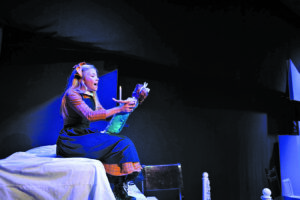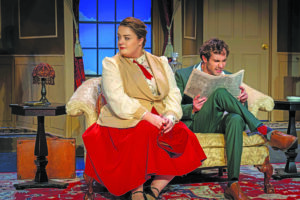2nd Time in 2 Weeks, F.C. Council Mulls Big Project With Grocery
The developers of the proposed Reserve at Tinner Hill large scale mixed use project delivered a signed letter of intent from the Fresh Market grocery people to occupy 20,000 square feet on the ground floor to the Falls Church City Council Monday, a critical requirement stipulated by the Council for a green light on the project.
But although it was evident the Council would subsequently vote unanimously to edge forward with the Lincoln Properties’ plan for S. Washington St., two parcels now occupied by International Motors and Meineke Motors, it still took three and a half hours to get there. Even with the signed letter of intent in hand, and a 7-0 vote to move a step ahead, there remained some uncertainties about the project’s eventual outcome.
It marked the second time in two weeks that the Council took a close look at a proposed major new mixed-use project proposed for the commercially-zoned corridors of the City. Last week, the subject was Rushmark’s project featuring a Harris Teeter grocery in the 300 block of W. Broad St.
Neither the Rushmark or Lincoln Properties people said they feel the placement of significant retail grocery stores on their respective sites would be a problem. The two are different kinds of stores, each has said, and at enough of a distance from one another that neither’s business will suffer as a result of the other.
Instead, the City’s planning and economic development offices are hopeful that with the approval and ground breaking for both sites before summer, they will serve as lynchpins for a lot of new commercial development in between them in the area originally targeted for a City Center.
The Lincoln project, which has been the subject of discussions internal to City Hall for months, is designed to have 224 rental residences above a ground floor of retail and commercial and three levels of underground parking. The developers have offered to deliver a $1.57 million cash contribution to the City schools’ capital fund and $540,000 in permit fees to the City before putting a shovel in the ground, and once completed, according to the City’s economic model, could bring a fresh $1.2 million into the City’s coffers annually on two parcels of land now dedicated to automotive use that generate $79,000 a year.
Surprising to everyone Monday was the chorus of support that showed up from businesses and residents surrounding the project, including from one of its strongest early detractors, the Creative Cauldron and Arts Space of Falls Church people who would be across the street on S. Maple. Former Falls Church Vice Mayor Marty Meserve, speaking for those groups, hailed the Lincoln team for revising its project to provide significant “portico” and “incubator” retail spaces on its ground floor facing onto S. Maple, and the Pearson Square/Creative Cauldron space.
It was earlier renderings of the project that presented S. Maple with a blank wall that caused major heartburn at first, as well as the potential competition from a prospective occupant of the new space, the Levine School of Music.
Indeed, Levine was out in force at tonight’s hearing, led by its CEO Peter Jablow, Tina Dove head of the school’s Northern Virginia campus and a local City resident and business owner who is currently a student at the Northern Virginia campus, based in Arlington.
But while making their forceful case for the benefits of allowing Levine’s Northern Virginia campus to occupy the new project, they also conceded that they could only do so if the City included among its proffer requests from the developer a break on the non-profit’s rent to the tune of $100,000 annually for 10 years. For a Council tonight veritably obsessed with maximizing the return on its commercially-zoned land, it may not have been the best time to pitch for an arrangement.
Vice Mayor David Snyder said that if the project yielded the projected high end estimate of $1.2 million a year, it would be worth it, but if its proceeds came in at the low end of $540,000 a year if nothing on the ground floor were filled but the Fresh Market, it would not. “This presents a potentially positive, but also a potentially negative juncture,” he said, and stressed that while the Council voted unanimously tonight to forward the plan to a long list of City boards and commissions for input and feedback, that every effort be found to ensure the project generates the high end annual revenue amount. “If the revenue is at the low end, it is not worth the risk,” he said.
Councilman Phil Duncan said he the immediate impact of $1.57 million to the schools and $540,000 in up front permit fees could not be overlooked, outweighing the impact of the projected 26 school-aged students that could be expected to enroll in City schools from families living in the project’s new units.
With Monday’s preliminary vote, not exactly a “first reading” but enough to require only one further vote for final Council approval, the Council sent the plan out to its boards and commissions with the expectation reviewing the results of that and taking that final vote on May 13.











